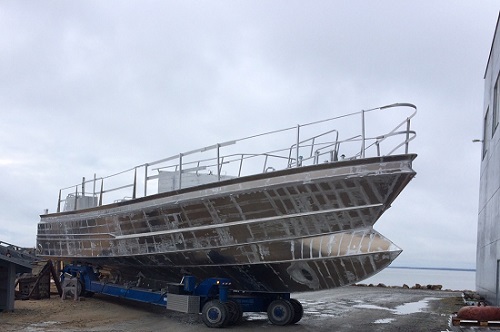

Baltic Workboats AS, an Estonian shipbuilding company with a shipyard in Nasva, announced completion of its first 22-metre wave-piercing aluminium patrol boat Patrol 2200 WP for the Belgium Customs. The aluminium boat, named Zeeleeuw (Sea lion), will serve as a multi-function patrol vessel for the Belgium state fleet DAB VLOOT.
Baltic Workboats Ltd. Director of Sales Jüri Taal said, "Building Zeeleeuw was extremely important step for us as she’s the first patrol craft in our series of wave-piercing vessels and will add another product line to complement our high-speed wave-piercing range of extremely seaworthy boats. We hope she’s the first of many to follow.”
Aluminium-made Patrol 2200 WP’s has a total length of 21,97m with maximum beam of 6,40m and draft measuring around 1,75m. At full load, it has a displacement of approximately 40 tonnes which includes 3000 litres of fuel, 500 litres of both water and waste, plus 300 l bilge water tank.
The lightmetal vessel can be launched at speeds up to 8 kn and carries a 5-metre RIB at the aft ramp. It has a central wheelhouse compared to aft one used with pilot boat designs. Patrol 2200 WP also has an underdeck mess room equipped with basic amenities for the crew on board. 
The aluminium patrol boat is powered by twin Volvo Penta D16MH marine diesel engines, 405 kW @ 1800 rpm each, rotating 5-blade fixed-pitch propellers through ZF 665V marine gearboxes. This powertrain can propel the vessel to a maximum speed of 22 knots. Thanks to its aluminium built, the vessel is not only light in weight but also highly fuel-efficient with diesel consumption totalling only 133 litres per hour at 20kn patrol speed.
The aluminium Patrol 2200 WP built for the state fleet DAB VLOOT is equipped adequately to suit her future working environment requirements:; for instance, it has two radars – one for sea use and another for use on river. Both the radars are equally viable on twin 24” widescreen displays. There is also a built-in office space for normal Customs procedures and basic rescue equipment for saving lives while on board.
Responses








